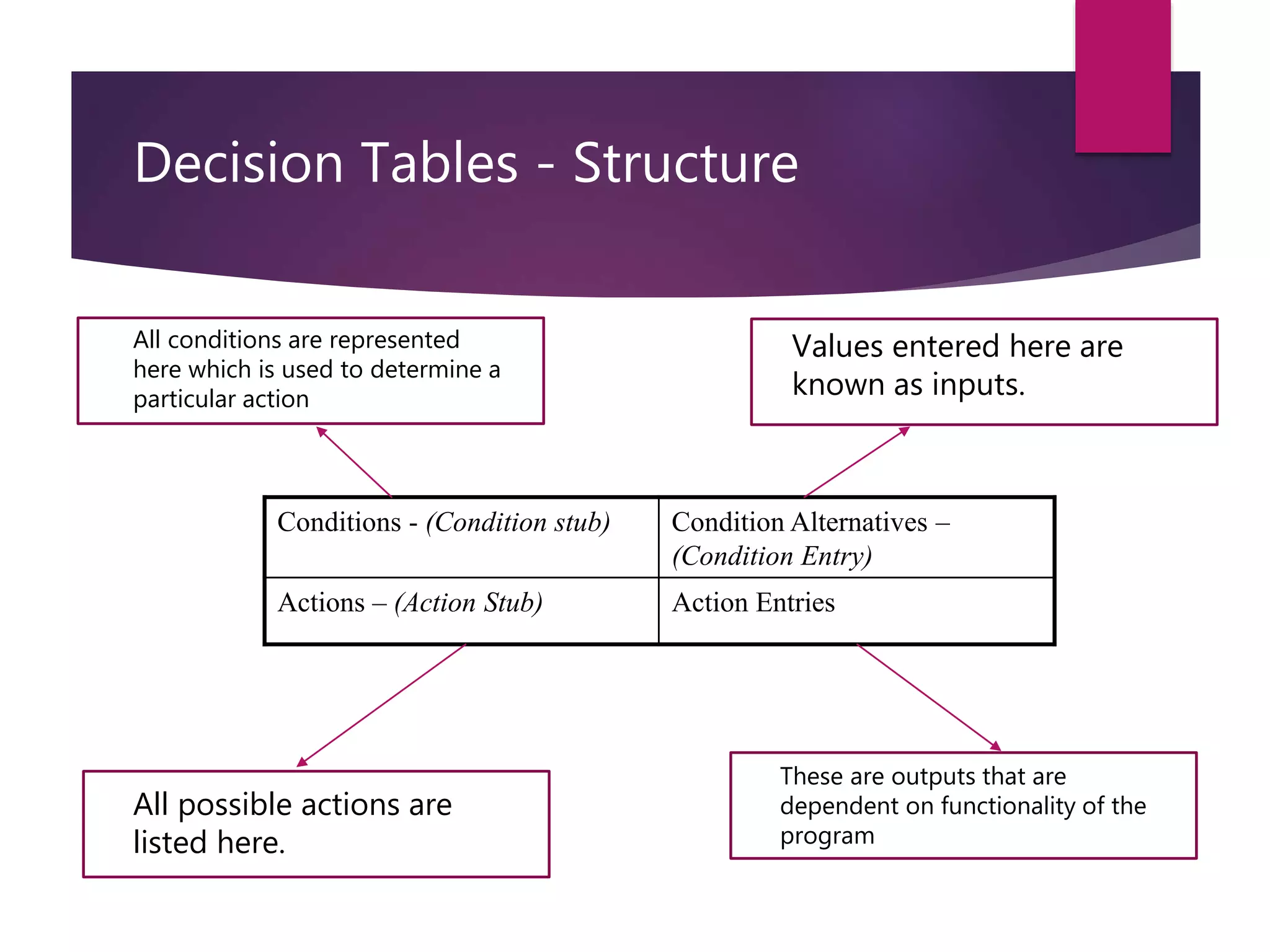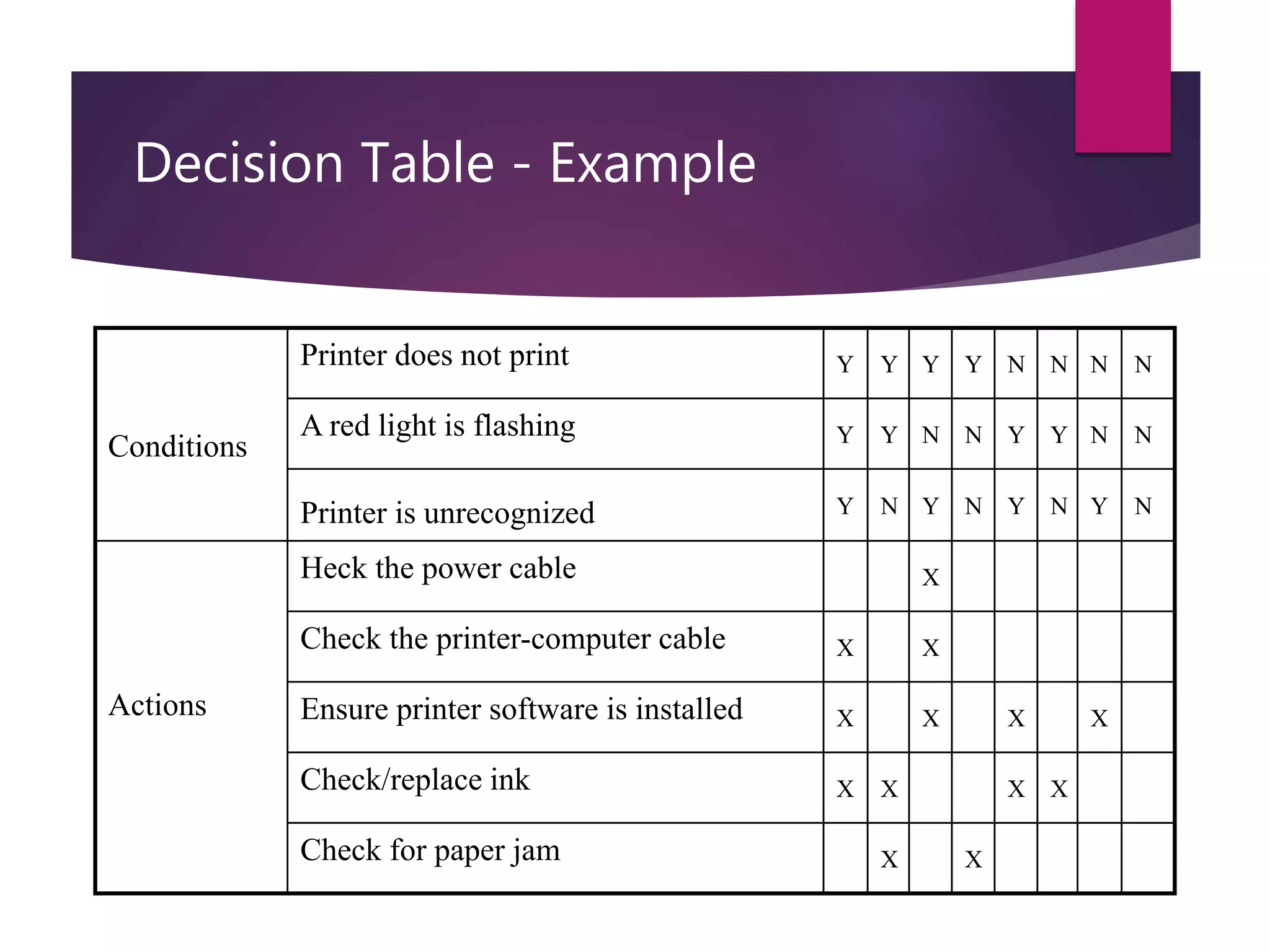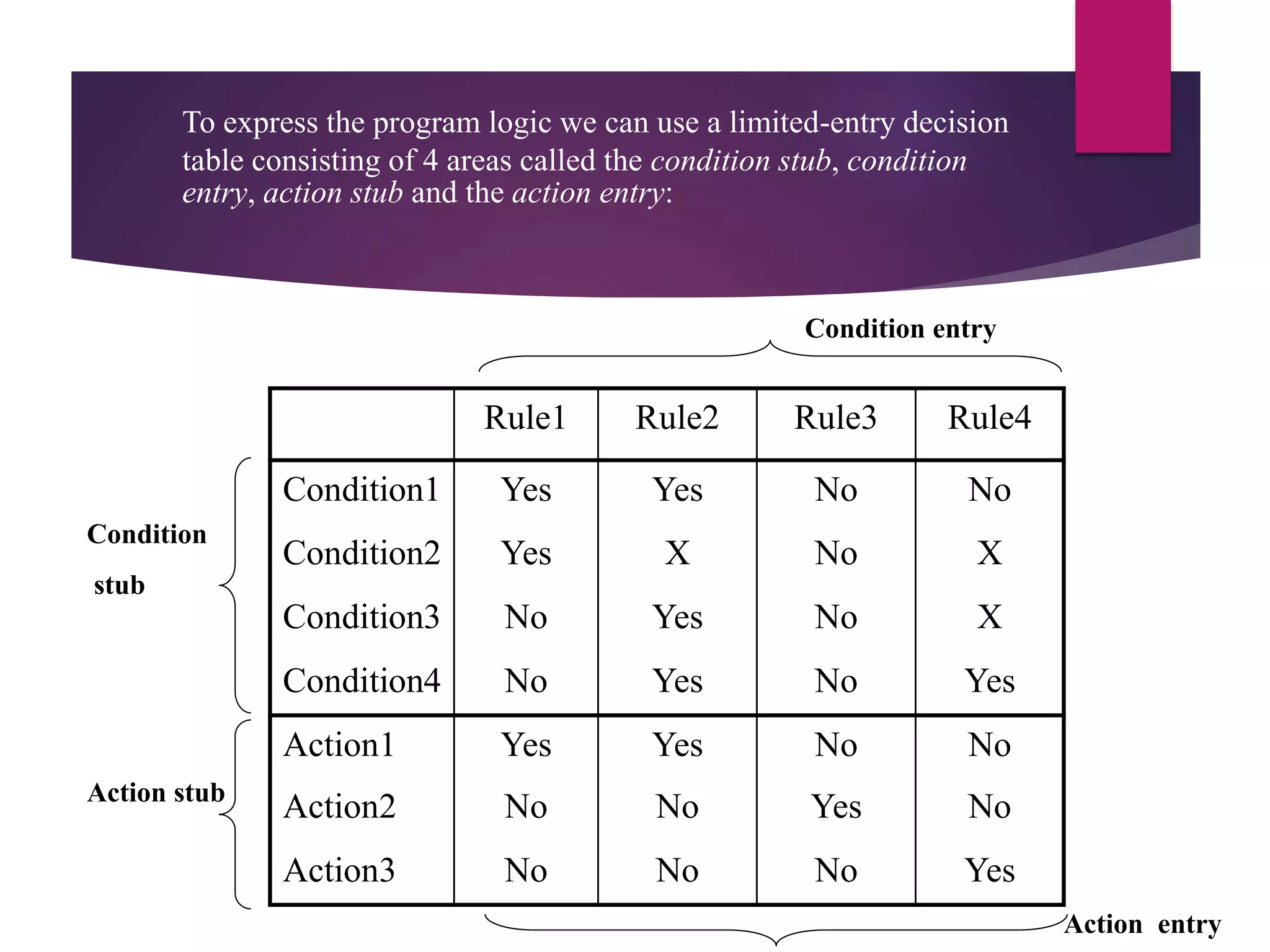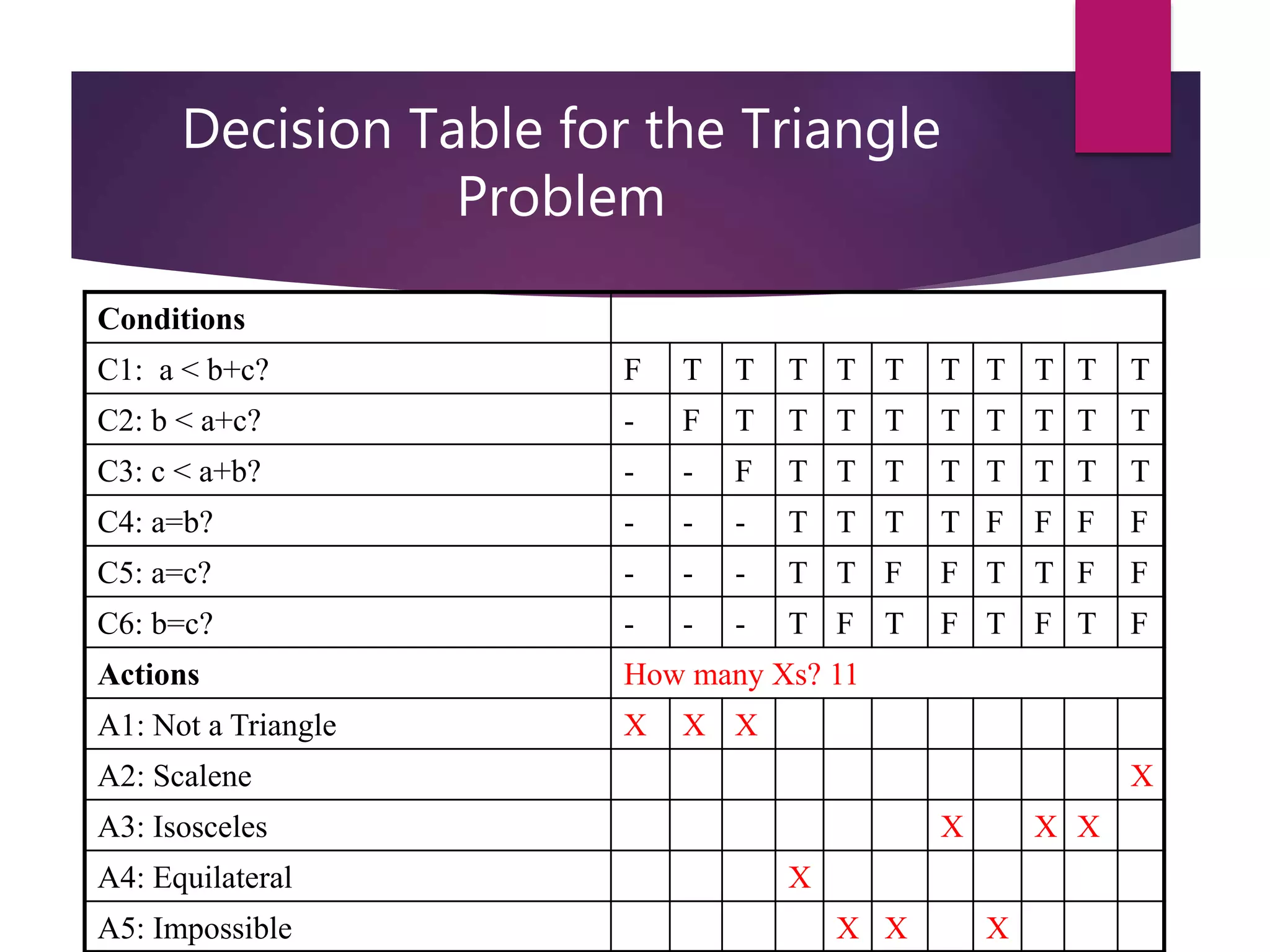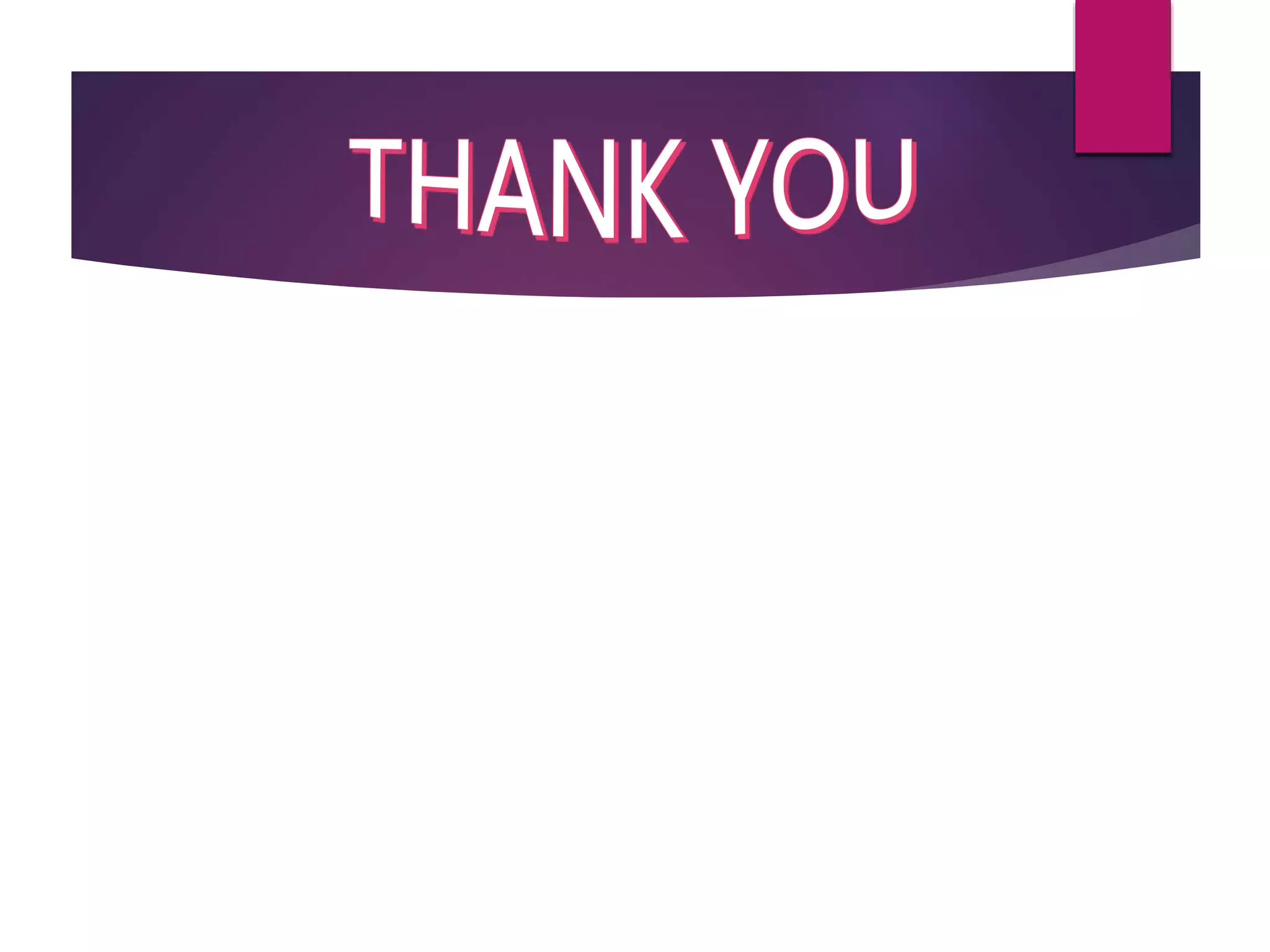The document discusses decision table-based testing, which models complex logic by providing a set of conditions and corresponding actions. It outlines the structure of decision tables, including condition stubs, action stubs, and various examples, emphasizing their utility in representing logical relationships. Decision tables enable a clear visualization of input/output dependencies and can effectively handle multiple conditions and actions.


